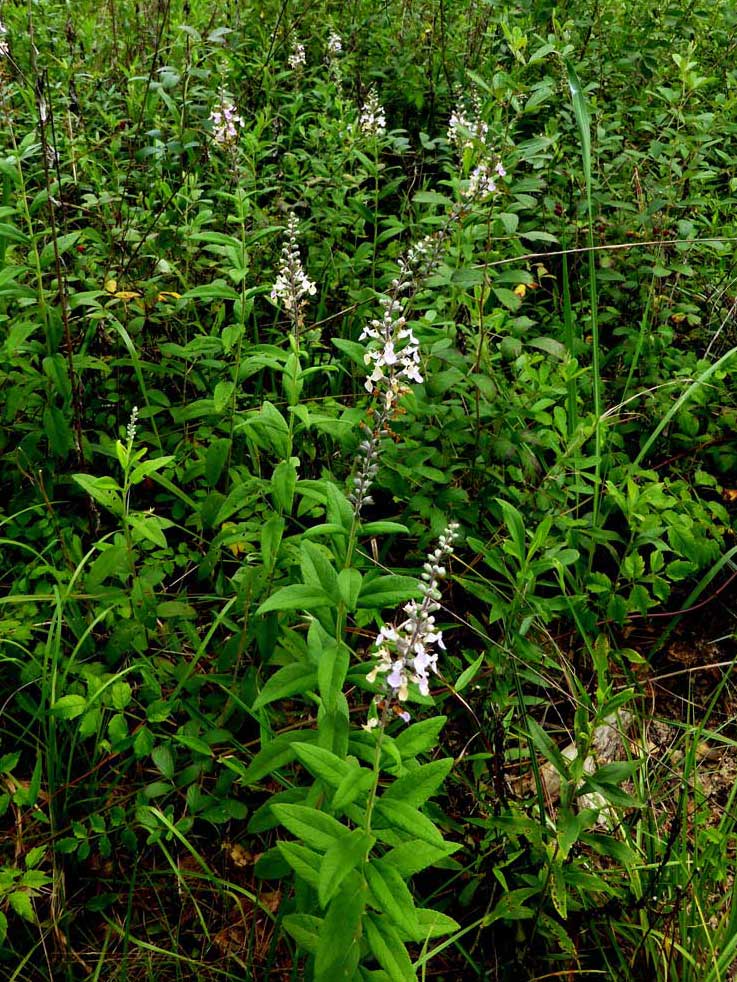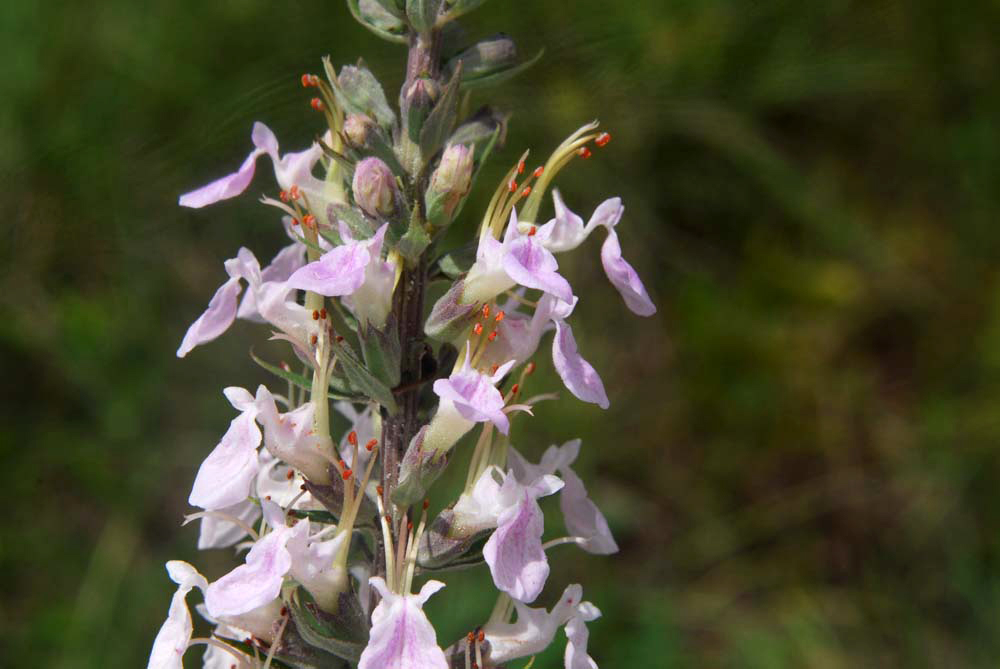Wood sage
Pictured above: Wood sage (Teucrium canadense). Photo taken at Tosohatchee Wildlife Management Area in Orange County by Wayne Matchett. Click on terms for botanical definitions. View post as a PDF
Also known as Canadian germander, Wood sage is found in floodplains, moist thickets and meadows, marshes and swamps throughout most of Florida. It flowers spring through fall, but may bloom year-round. The flowers attract a variety of native long-tongued insects that use the flower’s lower lip as a landing pad. Birds find the plant’s seeds appealing.
Wood sage’s flowers are whitish-pink to lavender, tubular and distinctly two-lipped. The upper lip is two-lobed and significantly reduced. The lower lip consists of two small but upright lobes “bookending” an elongated, ladle-like center lobe that sticks out. Flowers are born in terminal racemes. Stamens are prominent and extend upward. Anthers are reddish-orange. Leaves are petiolate, lanceolate to elliptic and taper to a point. They have toothed margins and are oppositely arranged. The upper leaf surface is deeply veined and may be smooth or hairy, while the underside is paler and covered in fine hairs. Stems are square and erect. Seeds are pitted and born in nutlets.
The genus name Teucrium refers to the mythological King Teucer of Troy who is said to have been the first to use a Teucrium species medicinally.

A cluster of Wood sage (Teucrium canadense) in northwest Florida. Photo by Eleanor Dietrich
Family: Lamiaceae (Mint family)
Native range: Nearly throughout
To see where natural populations of Wood sage have been vouchered, visit florida.plantatlas.usf.edu.
Hardiness: Zones 8A–10B
Lifespan: Perennial
Soil: Moist to seasonally wet sandy, loamy or organic soils
Exposure: Full sun to full shade
Growth habit: 2–3+’ tall
Propagation: Seed, division
Garden tips: Wood sage is suitable for moist to wet wildflower gardens, especially naturalistic landscapes as it spreads via underground rhizomes and can form large colonies.
Plants are occasionally available at nurseries that specialize in native plants. Visit PlantRealFlorida.org to find a native nursery in your area. Seeds may be available through the Florida Wildflowers Growers Cooperative at www.FloridaWildflowers.com.

